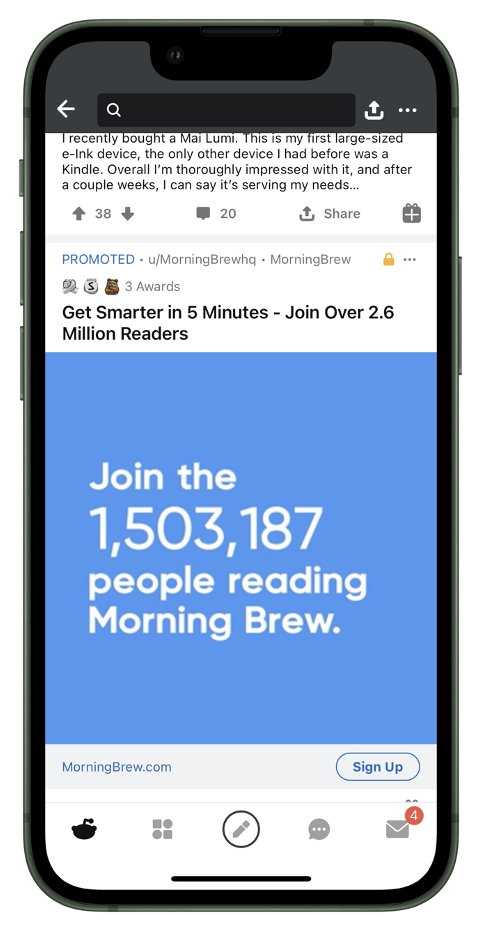Fortunately, most marketers have come to realise that the rational, consciously decisive homo economicus does not exist. People often make decisions, including purchasing decisions, unconsciously and allow themselves to be influenced by factors that actually have nothing to do with the decision. However, this also means that you can influence these decisions with your email marketing if you understand the behavioral patterns of your target groups. We will show you how you can use behavioral patterns in email marketing with three examples.
Even if we like to tell ourselves so: We humans do not (always) act rationally, even when making far-reaching decisions such as buying expensive high-involvement products or services. We are subject to numerous biases, let ourselves be driven by emotions and influenced by things that have no factual connection to our decisions. This could be our last meal, the performance of our favourite football team the day before or the light in a salesroom. And as if all that were not enough, we humans are also very good at rationalising unconscious, irrational decisions. That is, we come up with rational reasons for a decision, even though these reasons did not in fact influence our decision. The conscious, rational consumer is a myth and this has implications for marketing in general and therefore for email marketing in particular.
Observe behavioral patterns in email marketing
Behavioral patterns are processes in which people react to a stimulus with an unconscious action. Put simply, email marketing is about getting people to take a desired action (e.g. buying the presented product) through stimuli (e.g. the presentation of a product in the newsletter). Therefore, it is important for email marketers to know typical behavioral patterns and to take them into account when creating email marketing campaigns or when generating addresses.
The use of behavioral patterns is not uncontroversial. The term dark pattern has become established for manipulative methods that lead people to act in a way that is contrary to their interests. We expressly distance ourselves from manipulation and consumer-damaging behaviour and trust that responsible email marketing teams always have the interests of their recipients and customers in mind.
Using social proof as an argument
With social proof, the opinions or actions of other people serve as evidence that a product or service is worthwhile. There are different forms of social proof. For example, if a product or service is popular with a high number of people, this can be social proof. Social proof not only suggests quality to people but also appeals to their need to be part of a group. Doing what others do is a typical behavioral pattern.
In practice, it can look like this: Point out the number of people buying or using your offers, for example. “More than 2 million satisfied customers trust in us”, “60% of Germans have already bought our brand”, “Already 450 registrations for our webinar”. Sometimes even an unquantified reference like “most popular offers” or “many of our customers” can already be an effective social proof. For example, a German e-commerce company was able to increase the open rate from 33.08% to 42.87% in a Black Friday campaign when they wrote “most popular smart home deals” instead of just “smart home deals” in the subject line. This type of social proof is also suitable for address acquisition. Promote your newsletter by pointing out the number of people who read it.

Morning Brew uses social proof promoting their newsletter
Testimonials and reviews are also effective social proof. If you capture customer satisfaction or even very specific product reviews, use these in your email marketing communications. Testimonial recommendations can also have a great effect. These can be celebrities, experts, but also ordinary people from your target group.
Create pressure to act through scarcity
Potential customers are more likely to opt for your offer if they feel a certain time pressure to accept it. We are probably all familiar with the phrase “while stock lasts” and it suggests that you have to be quick to get the coveted product or make a bargain. Sometimes this is true. Perhaps you have experienced how the servers of a ticket shop collapsed under the onslaught at the pre-sale start of a concert of a popular band. Sometimes, however, it is not true and scarcity is primarily marketing, the use of a behavioral pattern. More examples of how you can use scarcity:
- Limited time offers: The classic! Make special offers available only for a very short period of time and clearly indicate this.
- Discounts staggered over time: Instead of letting a discount coupon expire completely after a certain period of time, you can also reduce the value successively, e.g. “today 20%, tomorrow 10%, the day after tomorrow 5%”.
- Limited capacities: events, workshops, travel, trips and flights, webinars, etc. – many offers have limited capacities. Don’t just point out the limitations, but also communicate to the clientele how many places/rooms/tickets/etc. are still available. For this, your email marketing or marketing automation solution must be real-time capable so that the most current capacities can always be played out in your emails. Important: Always offer alternatives (if possible) if a service is no longer available, so that your customers are not dissatisfied or go to your competitors.
- Show stock: Limitations do not only exist for services but also for physical products. Show your customers the stock of your products live. This is especially suitable for sales campaigns. Here too: Have alternatives ready in case a product is sold out.
- Use countdowns: Display shortages prominently so that they immediately catch the eye. Countdowns or timers are particularly effective. The countdown counts down either the time until an offer expires, the dwindling capacity of a service or the decreasing stock of a product.

Endy uses a countdown for an exclusive deal
- Live activity: Anyone who has ever booked a trip on a large booking platform will know it: “5 people are currently looking at this offer”. This message is often combined with a reference to limited capacities: “Only 2 rooms available at this price”. Show how many other customers are currently interested in an offer. If you are technically unable to play out live data, you can also use empirical values: “An average of 50 bookings per day” or “40% of our customers take advantage of our Black Friday offer”.
Storytelling becomes scrollytelling
People love stories. Stories can be emotionally moving, they can create tension, evoke needs and thus activate behavioral patterns. Marketing content is also more effective when it is presented in story form. Storytelling has become standard in marketing. A special form of storytelling in email marketing is scrollytelling. Whether in emails, on websites, in social media feeds or most other digital formats: Users scroll down. In scrollytelling, content is presented in such a way that users move through the story by scrolling, or the scroll effect is used to guide users from one piece of content to the next. Different types of content are usually combined, especially images and text.
The structuring of the content makes use of the familiar behavioral pattern of scrolling in order to guide users to the desired action via scrolling and with the help of storytelling.

Conleys uses graphics to guide readers from offer to offer
What is there to consider when using scrollytelling?
- If you use texts, divide them into short content blocks of no more than eight lines. Do not use the entire width of the screen for the content blocks.
- Use connecting elements between the individual content blocks to draw the eye from content block to content block.
- Bring dynamism into the arrangement of the content, e.g. by staggering content blocks instead of arranging them in the same column below each other. Mix images and text.
- Use a lot of white space and strong contrasts to distinguish the individual content blocks from each other and to stage the connecting elements in an eye-catching way.
Conclusion
Homo economicus is a myth. People often behave unconsciously and irrationally when making (purchasing) decisions. But there are certain patterns that are similar in many people. If you know these behavioral patterns, you can use them in email marketing to draw the attention of your clientele and motivate them to take desired actions (e.g. buying a product). The most common methods to use behavioral patterns in email marketing include social proof, scarcity and scrollytelling.
WHITEPAPER: MOBILE OMNICHANNEL IN DIGITAL DIALOGUE MARKETING

This is a use case from our Whitepaper: Mobile omnichannel in digital dialogue marketing. With the help of 9 further exciting use cases, we will show you how you can expand and optimise your digital dialogue marketing with mobile channels.
To download the whitepaper, simply fill out the form.